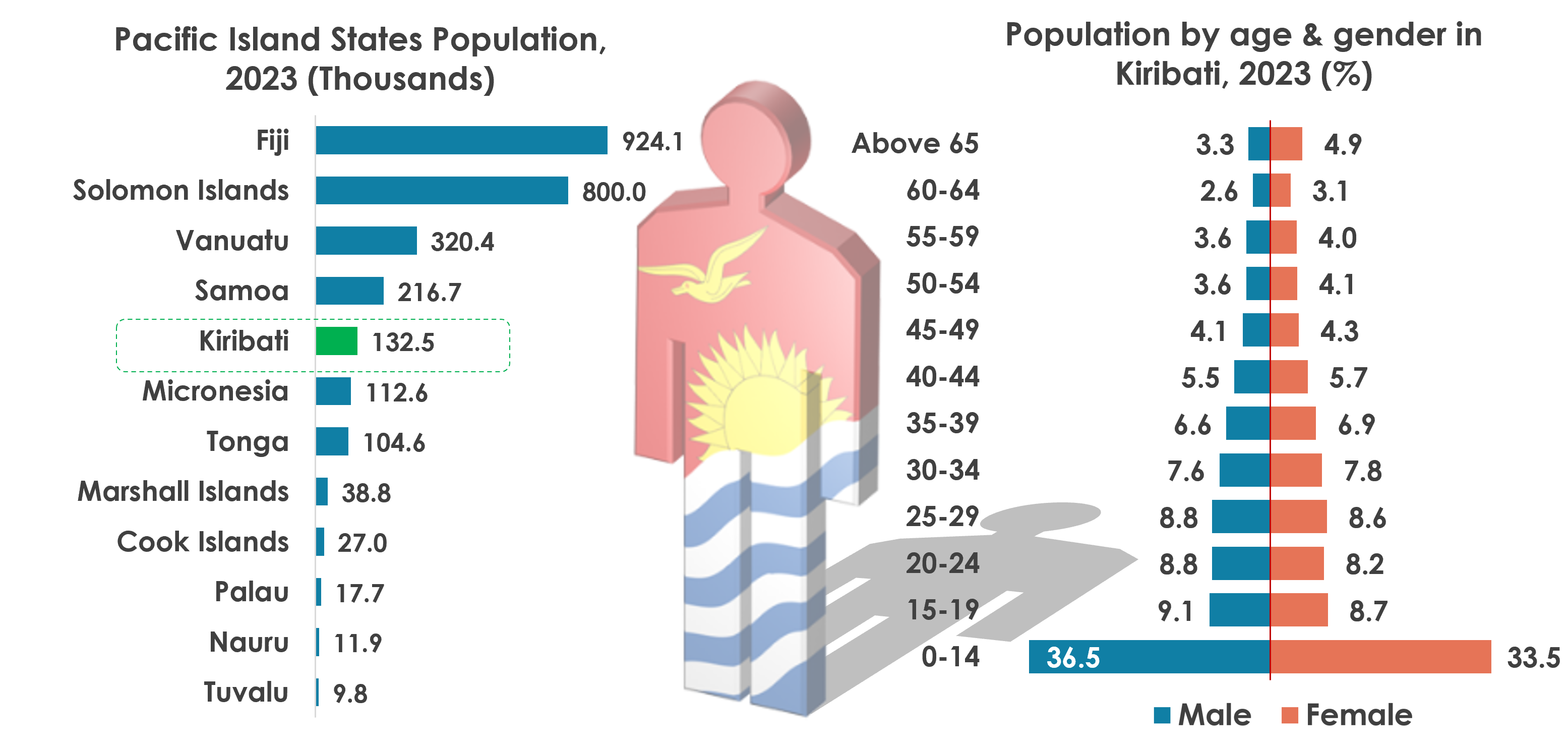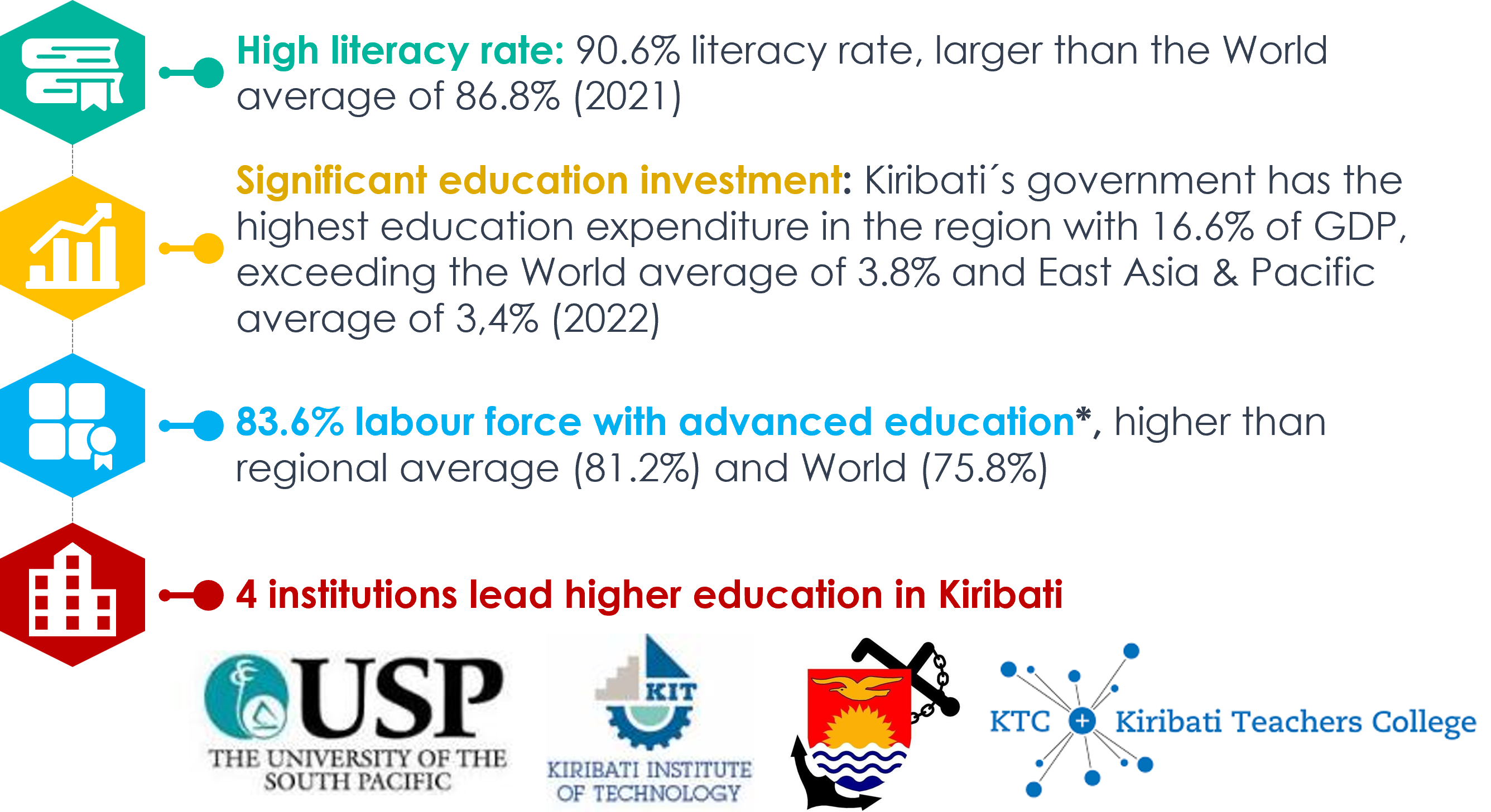5. Young, vibrant, skilled and educated workforce

Despite its small size, Kiribati boasts a fast-growing population that offers investors access to a dynamic talent pool of young, motivated, and trainable individuals. With a strong culture of learning, our workforce is well-prepared to support a wide range of investment projects. Employers benefit from a population that is not only youthful and eager to contribute, but also adaptable and committed to continuous improvement—making Kiribati an ideal destination for long-term business growth.
A young, growing, and ready workforce
- Strategic demographic scale: With a population of 132,500, Kiribati is the 5th most populous nation among Pacific Island States*, offering a solid human capital base despite its small land area.
- Young and dynamic talent pool: A remarkable 60% of the population is under the age of 30, significantly higher than the global average (47%) and that of East Asia & the Pacific (37%). This ensures a long-term, energetic workforce with high adaptability.
- Growing and ready to work: Kiribati’s population is growing at 1.6% per year, nearly double the world average (0.9%) and eight times faster than East Asia & Pacific (0.2%), fueling a steady pipeline of new talent.
- Strong labor force participation: With 61% of the population engaged in the labor force, businesses can count on a motivated, available, and trainable workforce across sectors.

* Pacific Island States: Excluding Australia, New Zealand and Papua New Guinea for their large dimensions, and overseas territories (except by Cook Islands). - Labor force: population between 15-65 years old. - Source: The World Bank Database (https://databank.worldbank.org/source/world-development-indicators#)
Skilled and educated workforce

Note: East Asia & Pacific average literacy rate of 96%. - *Advanced education comprises short-cycle tertiary education, bachelor’s degree, master’s degree, or doctoral degree, or equivalent education level according to the International Standard Classification of Education 2011 (ISCED 2011). - Source: The World Bank Database (https://databank.worldbank.org/source/world-development-indicators#) / USAID (https://idea.usaid.gov) / https://www.worldeducation.info/kiribati/universities - https://univ.cc / https://www.scholaro.com / https://www.university.im/kiribati.